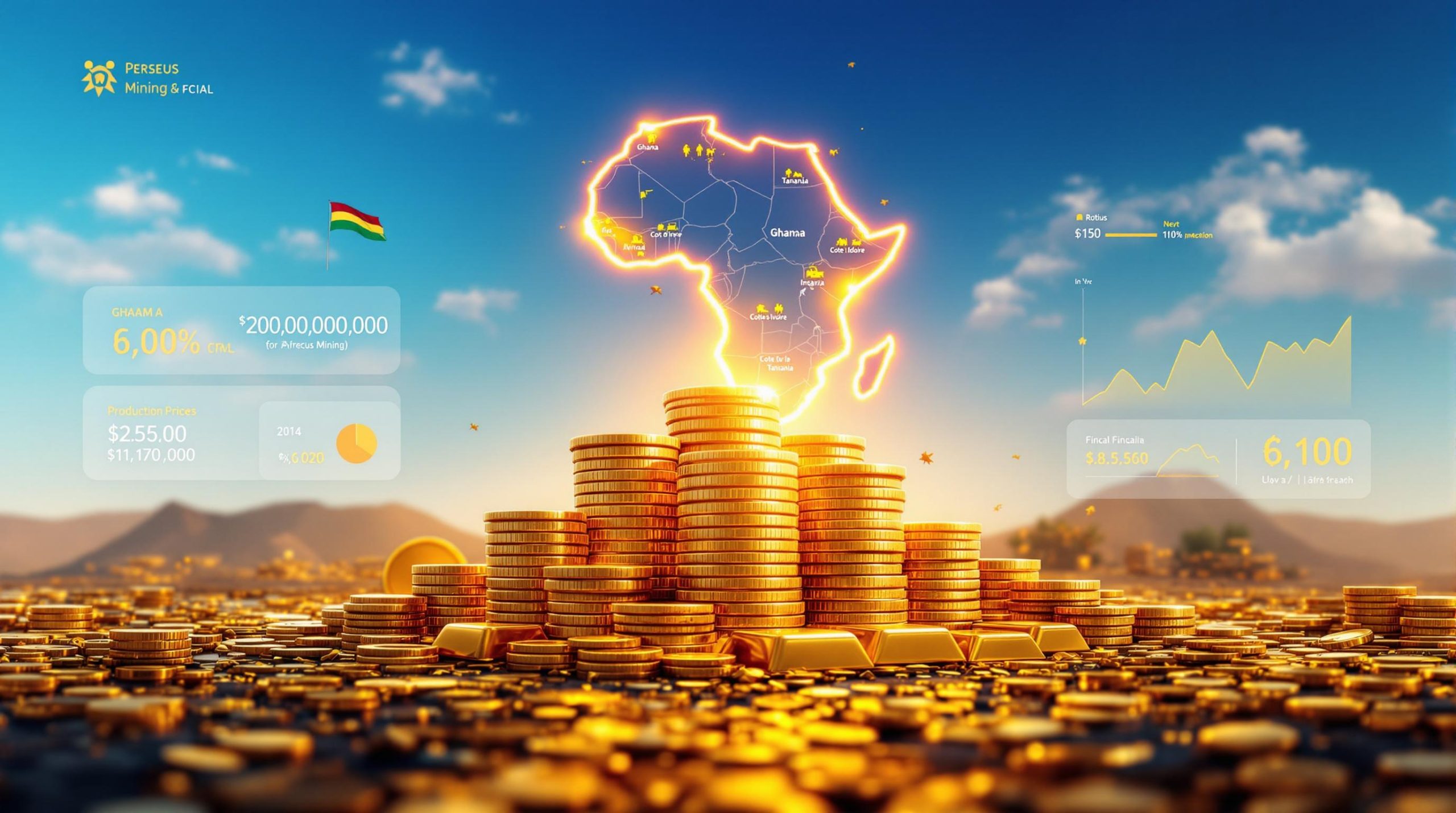Understanding the Copper Supply-Demand Equation
The global copper market stands at a critical crossroads. With demand accelerating through electrification trends and supply facing unprecedented constraints, industry dynamics have entered uncharted territory. This comprehensive analysis explores the complex factors shaping copper's future and the investment implications of this evolving copper supply and demand landscape.
Current Copper Supply Challenges
Copper production faces significant headwinds despite its essential role in the global economy. The production landscape has shifted dramatically over recent years, creating both opportunities and formidable barriers for market participants.
The Production Bottleneck
Major mining companies have adopted a conservative approach to copper development, focusing primarily on maintaining existing operations rather than developing new projects. This strategic shift reflects growing caution in capital allocation amid escalating development costs and regulatory complexity.
"None of the majors have the visceral fortitude to take on large-scale greenfield development challenges," notes industry experts. Instead, companies like BHP, Rio Tinto, and Anglo American are concentrating investments on extending the productive life of established operations where infrastructure costs have already been amortized.
Capital Intensity Barriers
The economics of new copper projects have become increasingly challenging, with capital intensity metrics reaching prohibitive levels. Recent examples highlight this concerning trend:
- Teck Resources' QB2 project: Initial capital estimate of $4.7 billion ballooned to $8.8 billion
- Additional costs: $1-2 billion in sustaining capital expenditures pushed the total investment close to $10 billion
- Capital intensity: Metrics exceeding $20,000 per ton of annual production capacity
These escalating costs create a significant barrier to new supply, particularly for public companies answerable to shareholders expecting disciplined capital allocation. The development pathway for major new copper mines has become increasingly treacherous, with cost overruns representing the rule rather than the exception.
Maintenance vs. Expansion Economics
The stark contrast between maintaining existing operations and developing new mines has reshaped capital allocation strategies across the industry:
- BHP's Escondida (Chile): Investing $10-15 billion merely to maintain current production of 1.35 million tons annually
- Rio Tinto's Kennecott (USA): Allocating $2.5 billion for sustaining capital to maintain 200,000 tons annual production through 2032
- Cost differential: Capital intensity for maintenance at established operations ($10,000-12,000 per ton) significantly lower than for new developments ($20,000+ per ton)
This economic reality has profound implications for future copper supply. As existing mines deplete higher-grade resources and face increasing technical challenges, the industry struggles to bring sufficient new production online to meet growing demand.
Supply Disruptions Amplifying Market Tightness
Recent operational challenges have further constrained copper availability:
- First Quantum's Cobre Panama: Production halted due to regulatory/operational issues
- Kamoa-Kakula (DRC): Flooding and seismic events impacting output
- Cumulative impact: Potential loss exceeding 200,000 tons of production from disruptions in 2023-2024
These disruptions highlight the vulnerability of copper supply chains to both operational and geopolitical risks, adding another layer of complexity to the copper supply forecast.
The Evolution of Global Copper Demand
Despite recurring questions about copper demand over the past five years, several fundamental drivers remain firmly intact, supporting a robust long-term outlook.
Persistent Demand Growth Drivers
Copper demand continues to benefit from multiple structural growth factors:
- Artificial intelligence infrastructure: Data centers and supporting energy systems require significant copper inputs
- Global electricity consumption: Rising baseline energy demand across developed and emerging markets
- Electrification trends: Transportation, heating, and industrial processes transitioning from fossil fuels
- Population growth: Creating foundational demand across consumer and infrastructure applications
"The demand for electricity is a megatrend that's not going away," industry analysts emphasize. This persistent growth in electrical infrastructure requirements forms the backbone of copper's demand story.
Electrification's Copper Intensity
The transition to electric vehicles represents a particularly significant demand driver:
- Electric vehicles: Require 80-100 kg of copper per vehicle
- Conventional vehicles: Contain only 20-25 kg of copper
- Multiplier effect: 3-4x increase in copper intensity per vehicle
As global automobile manufacturers accelerate EV production timelines, this transition creates substantial electrification-driven copper demand that wasn't factored into supply planning even a decade ago.
Impact of Geopolitical Factors
While market fundamentals remain strong, geopolitical tensions introduce additional volatility:
- Tariff concerns: Creating uncertainty but not fundamentally derailing consumption
- Regional conflicts: Affecting short-term market sentiment and logistics
- Central bank policies: Influencing investment flows into commodities and mining equities
The current copper price of approximately $4.40 per pound reflects these tight supply conditions, though future movements will depend on the interplay between physical market fundamentals and financial market dynamics.
Economic Viability Factors for Copper Projects
Not all copper deposits are created equal. Understanding the critical factors that determine economic viability is essential for identifying which projects have realistic development potential.
The Oxide Advantage
Oxide copper deposits offer significant economic advantages compared to their sulfide counterparts:
- Reduced processing requirements: Natural oxidation has already begun the metal liberation process
- Lower energy costs: Simplified extraction compared to energy-intensive sulfide processing
- Mineral advantages: Minerals like tenorite (80% copper by weight) offer high metal content with efficient recovery
- Direct production: Potential to produce copper cathode directly rather than intermediate concentrates
These advantages can dramatically improve project economics, particularly for smaller to medium-scale operations that can't leverage the economies of scale available to major producers.
Critical Variables Determining Viability
Several key technical factors determine whether a copper project can achieve economic returns:
- Mineralogy: Type of copper-bearing minerals affects processing requirements and recoveries
- Grade: Higher copper content per ton improves revenue potential
- Continuity: Consistent mineralization reduces mining complexity and dilution
- Geometry and depth: Affects strip ratios and mining method selection
- Infrastructure access: Proximity to power, water, and transportation reduces capital requirements
For example, Fitzroy Minerals' Buenavista project demonstrates favorable characteristics with drilling results including 110m @ 1.94% copper (oxide) and 58m @ 3.06% copper, highlighting the potential for medium-scale operations with attractive economics.
Medium-Scale Mining Opportunities
The Chilean coastal belt offers distinctive opportunities for medium-scale mining operations:
- Production scale: Projects producing 12,000-50,000 tons annually face lower regulatory hurdles
- Favorable royalty structure: 0.5-1.93% sliding scale for medium producers
- Streamlined permitting: Established pathways from resource definition to production
- Expansion potential: Initial smaller-scale operations with future growth options
This "start small, make money, then expand" model has proven successful for multiple operators in the region, offering an alternative to the high-risk, high-capital intensity approach required for world-class porphyry deposits.
Copper Development Timelines Compared to Other Metals
Copper mines typically face longer development cycles than many other mineral resources, creating additional challenges for supply forecasting.
Extended Development Cycles
The timeline from discovery to production for copper projects has lengthened considerably:
- 16-20 years: Average timeline from discovery to production for large-scale projects
- Permitting complexity: Increasing across major mining jurisdictions
- Engineering challenges: Growing as accessible deposits become scarcer
These extended timelines mean that discoveries made today may not contribute meaningful production until the 2040s, creating a substantial lag between market signals and supply response.
Regional Variations in Development Efficiency
Development timelines vary significantly by jurisdiction:
- Chile: Offers relatively streamlined permitting for appropriate projects in non-sensitive areas
- Canadian and Australian jurisdictions: Facing increasing regulatory complexity and stakeholder consultation requirements
- United States: Presenting fragmented regulatory landscape with state-by-state variations and federal overlays
For developers, understanding these regional differences is crucial for realistic project planning and risk assessment.
The "Permitability" Challenge
The concept of "permitability" (or "permisabilidad" in Chile) has become a critical consideration:
"You can have the greatest deposit in the world, but if you can't permit it, it has no value."
Projects face varying degrees of permitting difficulty based on:
- Environmental sensitivity: Projects in ecologically important areas face greater scrutiny
- Community impacts: Social license requirements becoming increasingly stringent
- Water usage: Growing concerns about consumption in water-stressed regions
- Development history: Brownfield expansions generally encounter fewer permitting obstacles
Barrick's Pascua Lama project in Chile stands as a cautionary example, where proximity to glaciers ultimately blocked development despite significant investment.
Investment Implications of Copper Market Dynamics
The current copper market environment creates specific investment opportunities and challenges that require careful strategic positioning.
Strategic Focus Areas
Several project types offer more favorable risk-reward profiles in the current environment:
- Oxide copper projects: Lower capital intensity and simplified processing
- Brownfield expansions: Leveraging existing infrastructure and permits
- Medium-scale operations: Clear paths to production with manageable capital requirements
- Jurisdictional advantages: Projects in regions with established permitting frameworks
Investors increasingly recognize the value of projects that can navigate to production without the massive capital requirements and extended timelines of world-class deposits.
Capital Allocation Considerations
Investment decisions increasingly reflect changing market realities:
- Major producers: Focusing primarily on maintaining existing operations
- Mid-tier companies: Targeting acquisitions of advanced projects
- Junior explorers: Struggling to access capital for early-stage exploration
- Private equity: Showing renewed interest in copper assets with clear development pathways
For public companies, particularly those with producing assets, the opportunity cost of capital has become a primary consideration in development decisions. Furthermore, understanding various copper investment strategies has become essential for market participants.
Exploration Challenges
The exploration landscape presents significant challenges:
- Declining discovery rates: Despite technological advances
- Increasing costs per discovery: As accessible deposits become scarcer
- Limited access to capital: For pure exploration plays
- Regulatory complexity: Even at the exploration stage
These challenges have contributed to a structural exploration deficit, with new discoveries insufficient to replace depleting reserves across the industry. In addition, mineral exploration insights show that companies must adapt their approaches to overcome these barriers.
Copper's Comparative Investment Appeal
Copper offers distinctive investment characteristics compared to other metals, creating specific opportunities and considerations for investors.
Relative Market Stability
As an industrial metal with diverse applications, copper offers relative stability compared to more specialized metals:
- Large, liquid global market: With transparent pricing mechanisms
- Established demand patterns: Across multiple industries
- Less volatility: Than specialty metals like lithium or rare earths
This market structure provides investors with greater liquidity and price discovery than many alternative metal investments.
Competitive Landscape Evolution
The competitive landscape for metal investments continues to evolve:
- Major oil companies: Entering lithium production (e.g., Chevron, Exxon)
- Diversified miners: Implementing strategic shifts (e.g., Rio Tinto's lithium focus)
- Precious metals: Benefiting from monetary and geopolitical uncertainty
These competitive dynamics create both challenges and opportunities for copper-focused investments, with each metal category offering different risk-reward characteristics.
Investor Perception Challenges
Mining investments face persistent perception challenges:
- Limited visibility: Among generalist investors
- Complexity barriers: For retail investors
- Competing investment narratives: From technology and other sectors
Addressing these perception challenges requires clear communication of the fundamental value proposition and the critical role copper plays in global electrification. Moreover, current copper price insights suggest potential for continued strength in the market.
Emerging Trends in Copper Exploration
Despite significant headwinds, exploration activity continues to evolve, adapting to changing market conditions and technological capabilities.
Geographic Focus Areas
Exploration activity shows distinct geographic patterns:
- Chilean coastal belt: Offering oxide opportunities in an established mining jurisdiction
- Arizona oxide deposits: Attracting attention from developers seeking US exposure
- Deeper porphyry targets: Requiring substantial capital commitment but offering scale potential
These geographic preferences reflect the industry's shifting priorities toward projects with clearer paths to production and manageable capital requirements.
Technological Applications
Advanced technologies are reshaping exploration approaches:
- Artificial intelligence: Applications for target generation and data integration
- Enhanced geophysical methods: For deep target identification
- Improved drilling technologies: Enabling more efficient testing of concepts
These technological advances offer potential improvements in discovery rates, though they haven't yet reversed the overall decline in exploration success.
Capital Allocation Strategies
Companies are adopting varied capital allocation strategies:
- Balancing near-term production: Potential with exploration upside
- Staged development approaches: To manage capital requirements
- Strategic partnerships: To share risk and expertise
The "start small, make money, then expand" model exemplified by companies like Antofagasta provides a template for risk-managed development in the current environment. According to the International Energy Agency, this approach may become increasingly necessary as the industry adapts to changing market conditions.
FAQ: Copper Supply and Demand
Will copper prices continue to rise in the coming years?
While supply constraints suggest upward pressure on prices, market dynamics remain complex. Current prices around $4.40 per pound reflect tight supply conditions, but future price movements will depend on global economic growth, technological adoption rates, and the success of development projects currently in the pipeline.
How significant is the impact of electric vehicles on copper demand?
Electric vehicles require 3-4 times more copper than conventional vehicles, creating substantial incremental demand. A typical electric vehicle contains 80-100 kg of copper compared to 20-25 kg in conventional vehicles. As EV adoption accelerates globally, this represents a significant growth driver for copper demand.
What role does recycling play in copper supply?
Copper recycling contributes approximately 30% of global supply. While recycling rates continue to improve, primary production remains essential to meet growing demand. The high recyclability of copper (nearly 100% without loss of performance) makes it an important component of circular economy initiatives.
How are ESG considerations affecting copper project development?
Environmental, social, and governance factors increasingly influence project development timelines and costs. Projects with lower environmental footprints, positive community relationships, and strong governance practices typically face fewer development obstacles. This trend favors projects in established mining jurisdictions with robust regulatory frameworks.
What are the implications of potential substitution for copper?
While aluminum can substitute for copper in some applications, copper's superior conductivity, durability, and recyclability limit substitution potential in high-performance applications. Technological advances may create new substitution possibilities, but copper's fundamental properties ensure its continued importance in electrical and thermal applications.
Outlook: Navigating the Copper Supply-Demand Imbalance
The copper market faces a structural supply-demand imbalance that appears likely to persist through this decade. With demand growth driven by electrification trends and supply constrained by development challenges, market tightness creates both opportunities and strategic imperatives for industry participants.
For investors, focusing on projects with clear paths to production, manageable capital requirements, and favorable jurisdictional positioning offers the most compelling risk-adjusted returns in this environment. The medium-scale oxide copper operations in established jurisdictions represent a particularly attractive segment, combining reasonable development timelines with favorable economics.
As the global economy continues its electrification journey, copper's fundamental role in enabling this transition ensures its central position in the critical minerals landscape. Understanding the complex factors shaping copper supply and demand dynamics will be essential for navigating this evolving market environment.
Searching for the Next Major Copper Discovery?
Stay ahead of the market with instant alerts on significant ASX copper discoveries, powered by Discovery Alert's proprietary Discovery IQ model. Explore why historic mineral discoveries can generate substantial returns by visiting Discovery Alert's dedicated discoveries page and begin your 30-day free trial today.




